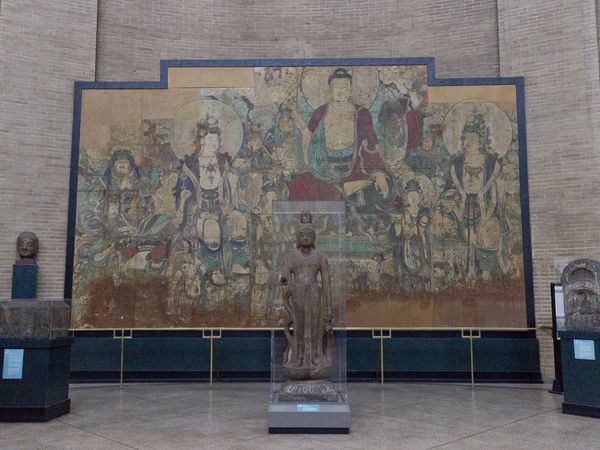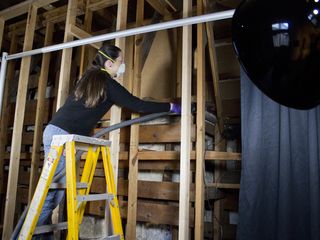
Penn Tower, once Penn Medicine's beacon in the sky, will come down over the next year. Demolition started with the razing of the garage and will continue in small segments, starting from the top down, so as to minimize disruptions of daily operations.
In its place will one day rise a new patient pavilion on the Hospital of the University of Pennsylvania campus. As demolition of Penn Tower continues, patients and visitors will see the process unfold in real time.
Penn Medicine is working with its neighbors, including the University of Pennsylvania Museum of Archaeology and Anthropology, to ensure that the demolition causes as little disruption as possible.
Given its proximity to Penn Tower and the demolition site, there is the potential for it to impact the museum's ancient artifacts. How, you ask? The vibration associated with heavy equipment and an active demolition site could have a shifting effect on the delicate objects located in the museum.
"We began conversations with the museum as soon as demolition plans were in place," reported Bryan Heigh, project manager in Real Estate, Design, and Construction. "We worked with them to come up with a plan that would allow demolition to move forward while also protecting the museum's collections and artifacts."
Founded in 1887, the museum first opened at its present site in 1899. It houses some of the world's great archaeology treasures encapsulating and illustrating the early cultures of ancient Babylonia, Egypt, China and Native America, dating from as far back as 2600 B.C.
"Some of our more iconic pieces were installed decades ago, before special conservation techniques were implemented," said Bob Thurlow, the museum's special projects manager and project leader.
This spring, super-sensitive vibration sensors were placed in key locations throughout the museum as a jackhammer and a steamroller operated outside to give the museum baseline vibration measurements.
"Anything that registered higher than a 1-to-1 ratio meant the vibrations were amplified as they traveled through the building and showed us that these items and artifacts were not safe and would need to be stabilized or relocated prior to demolition," explained Thurlow.
The museum also hired Andrew Smyth, professor of Civil Engineering and Engineering Mechanics at Columbia University, an expert in using sensor information to determine the condition of critical infrastructure. Smyth had previously worked with The Metropolitan Museum of Art and the National Science Foundation to implement standards on how museums can safeguard their collections during serious construction.
 Thurlow and collections and conservation staff members are now working to "shore up" and relocate those items the vibration monitors showed to be in greatest danger of movement and potential damage. This includes two 6,000 lb. marble columns from approximately 500 A.D. with top and bottom capitals weighing approximately 1,000-1,500 lbs. The columns are being affixed to the wall for greater stability.
Thurlow and collections and conservation staff members are now working to "shore up" and relocate those items the vibration monitors showed to be in greatest danger of movement and potential damage. This includes two 6,000 lb. marble columns from approximately 500 A.D. with top and bottom capitals weighing approximately 1,000-1,500 lbs. The columns are being affixed to the wall for greater stability.
The team, made up of 14 staffers and specialists, is also dismantling the walls of the Tomb Chapel of Kapure, an Egyptian structure from 2300 B.C., first shown publicly at the World's Fair in 1914.
In addition, many Egyptian artifacts from the museum's collection are being relocated during demolition and pending construction. Next spring, a team of conservators will oversee the takedown of two 16-foot tall Buddhist murals from a Ming Dynasty monastery.
The museum is also reconfiguring its storage space and rehousing its artifacts so that a project such as this is not necessary for future construction projects of this magnitude and impact.
"We are glad the museum's artifacts are able to remain safe and protected during this process," said Heigh. "Bob and museum leadership have been willing and supportive partners."